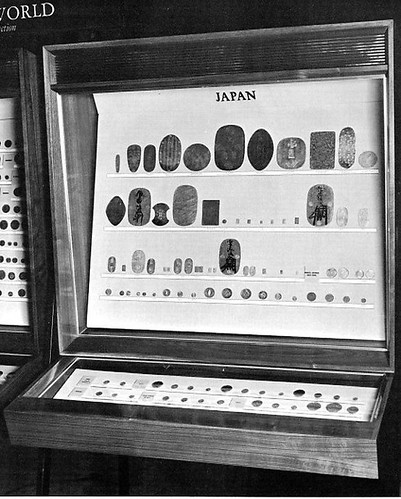
PREV ARTICLE
NEXT ARTICLE
FULL ISSUE
PREV FULL ISSUE
HISTORY OF THE NATIONAL NUMISMATIC COLLECTION
Jeff Garrett has written a great article on the history of the Smithsonian's National Numismatic Collection. Here are a few excerpts, but be sure to read the whole thing on the NGC site.
-Editor
Although the United States received the bequest from James Smithson in 1838, the Smithsonian Institution was not established until an Act of Congress was signed by President James Polk on August 10, 1846. On May 1, 1847, the cornerstone of its first building was laid on the Mall. You can visit the first buildings today with a short stroll across the Mall to the Smithsonian Castle. They are open to the public and feature a rotation of exhibits. It is like stepping back in time and visiting one of the oldest museums in the country as it looked in the 1840s. In those days most exhibits centered on what were called “Natural Curiosities.” This might include rare minerals, skeletons and mounted animal displays. It was not until the 1880s that much interest was given to the collecting of numismatic material at the Smithsonian. In those days collecting medals was of primary interest in the museum. The Centennial Exposition of 1876 in Philadelphia provided a tremendous amount of new material for the collection. The most important event in the history of the National Numismatic Collection occurred in 1923. Around this time period, the US Mints were closed due to a robbery at the Denver Mint. Also, the curator of the Mint Collection, Dr. T. Louis Comparette died suddenly. Because of the robbery, the Secretary of Treasury, Andrew Mellon, suggested that the United States Mint transfer its collection to the National Collection in Washington, D.C. Mellon did not like the idea of the collection being closed to visitors and unavailable for research. In May 1923, the US Mint transferred 18,324 of the greatest coins in the world to the Smithsonian Institution. Although the Mint Collection was officially started in 1838, the collection's roots can be traced to the beginning of Mint operations in 1792. The Chief Coiner, Adam Eckfeldt, carefully saved what at the time were called “master coins” of each year. These are today more commonly referred to as Proof or Specimens. Eckfeldt also saved coins that had been redeposited at the Mint for re-coinage. An example of the famous Brasher Doubloon was obtained in this manner. Making a list of all of the important coins given to the Smithsonian in 1923 would take pages and pages. Just a few of the more famous coins include the 1849 Double Eagle, an 1804 Silver Dollar, an 1822 Half Eagle, both 1877 Gold Unions, multiple 1907 Ultra High Reliefs, and an incredible run of early Proof coinage that began in 1817. The transferred collection also included over 100 Patterns coins, many of which are unique. Pioneer gold coins are also heavily represented, with many examples being the finest of their kind in the world.

Grant Collection of Japanese Gold Coins
To read the complete article, see:
BRIEF HISTORY OF THE SMITHSONIAN'S NATIONAL NUMISMATIC COLLECTION
(www.ngccoin.com/news/viewarticle.aspx?IDArticle=3358&)
The Numismatic Bibliomania Society is a non-profit organization promoting numismatic literature. See our web site at coinbooks.org. To submit items for publication in The E-Sylum, write to the Editor at this address: whomren@gmail.com To subscribe go to: https://my.binhost.com/lists/listinfo/esylum All Rights Reserved. NBS Home Page Contact the NBS webmaster 
|
